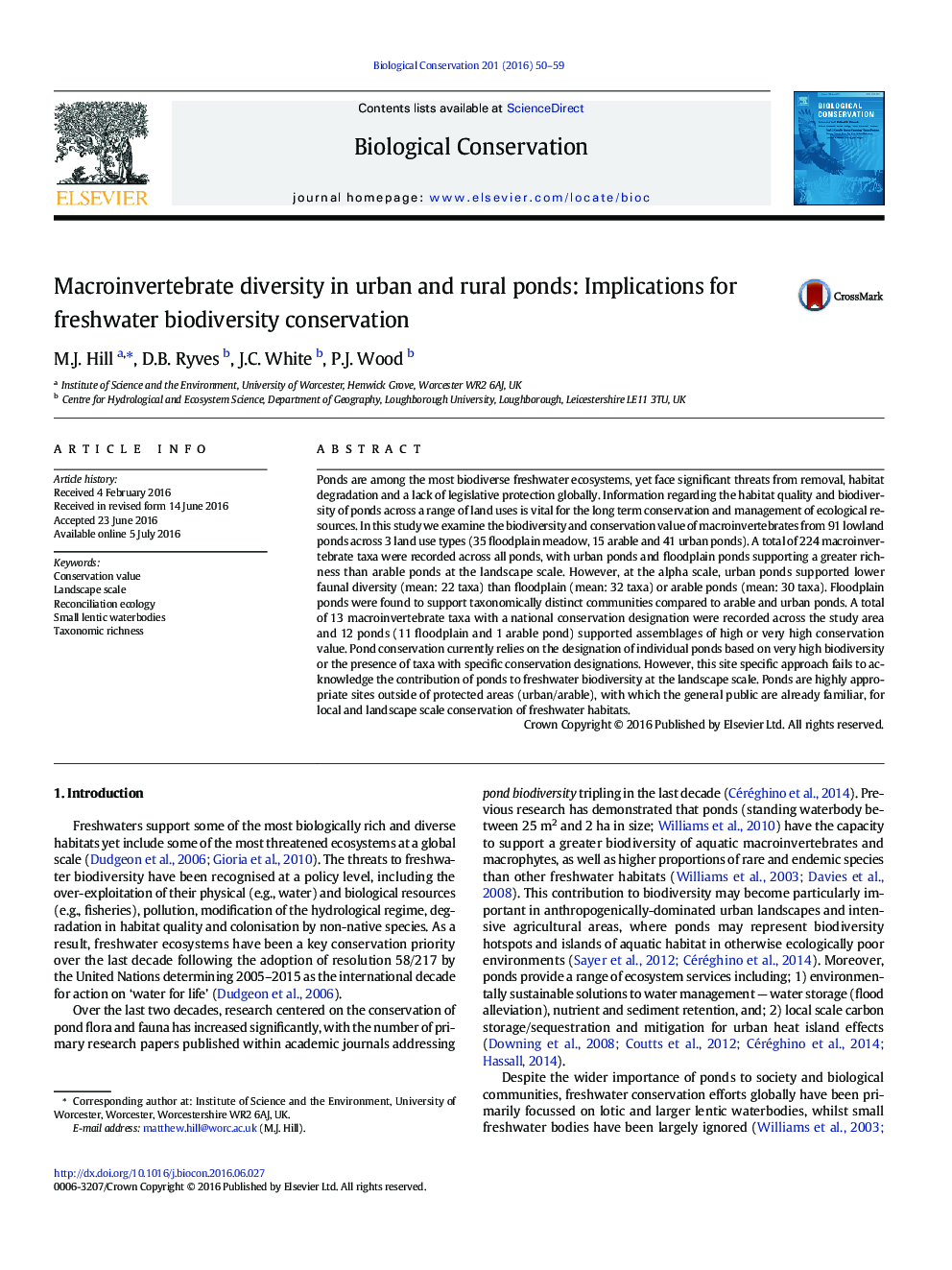| کد مقاله | کد نشریه | سال انتشار | مقاله انگلیسی | نسخه تمام متن |
|---|---|---|---|---|
| 6298164 | 1617900 | 2016 | 10 صفحه PDF | دانلود رایگان |
- Floodplain ponds were of a higher conservation value than other pond types.
- Floodplain ponds supported the highest macroinvertebrate alpha diversity.
- At a landscape scale, urban and floodplain ponds support similar biodiversity.
- Landscape scale conservation is the most effective way to conserve ponds.
- Ponds represent key freshwater locations for the conservation of aquatic habitats and biota.
Ponds are among the most biodiverse freshwater ecosystems, yet face significant threats from removal, habitat degradation and a lack of legislative protection globally. Information regarding the habitat quality and biodiversity of ponds across a range of land uses is vital for the long term conservation and management of ecological resources. In this study we examine the biodiversity and conservation value of macroinvertebrates from 91 lowland ponds across 3 land use types (35 floodplain meadow, 15 arable and 41 urban ponds). A total of 224 macroinvertebrate taxa were recorded across all ponds, with urban ponds and floodplain ponds supporting a greater richness than arable ponds at the landscape scale. However, at the alpha scale, urban ponds supported lower faunal diversity (mean: 22 taxa) than floodplain (mean: 32 taxa) or arable ponds (mean: 30 taxa). Floodplain ponds were found to support taxonomically distinct communities compared to arable and urban ponds. A total of 13 macroinvertebrate taxa with a national conservation designation were recorded across the study area and 12 ponds (11 floodplain and 1 arable pond) supported assemblages of high or very high conservation value. Pond conservation currently relies on the designation of individual ponds based on very high biodiversity or the presence of taxa with specific conservation designations. However, this site specific approach fails to acknowledge the contribution of ponds to freshwater biodiversity at the landscape scale. Ponds are highly appropriate sites outside of protected areas (urban/arable), with which the general public are already familiar, for local and landscape scale conservation of freshwater habitats.
Journal: Biological Conservation - Volume 201, September 2016, Pages 50-59
